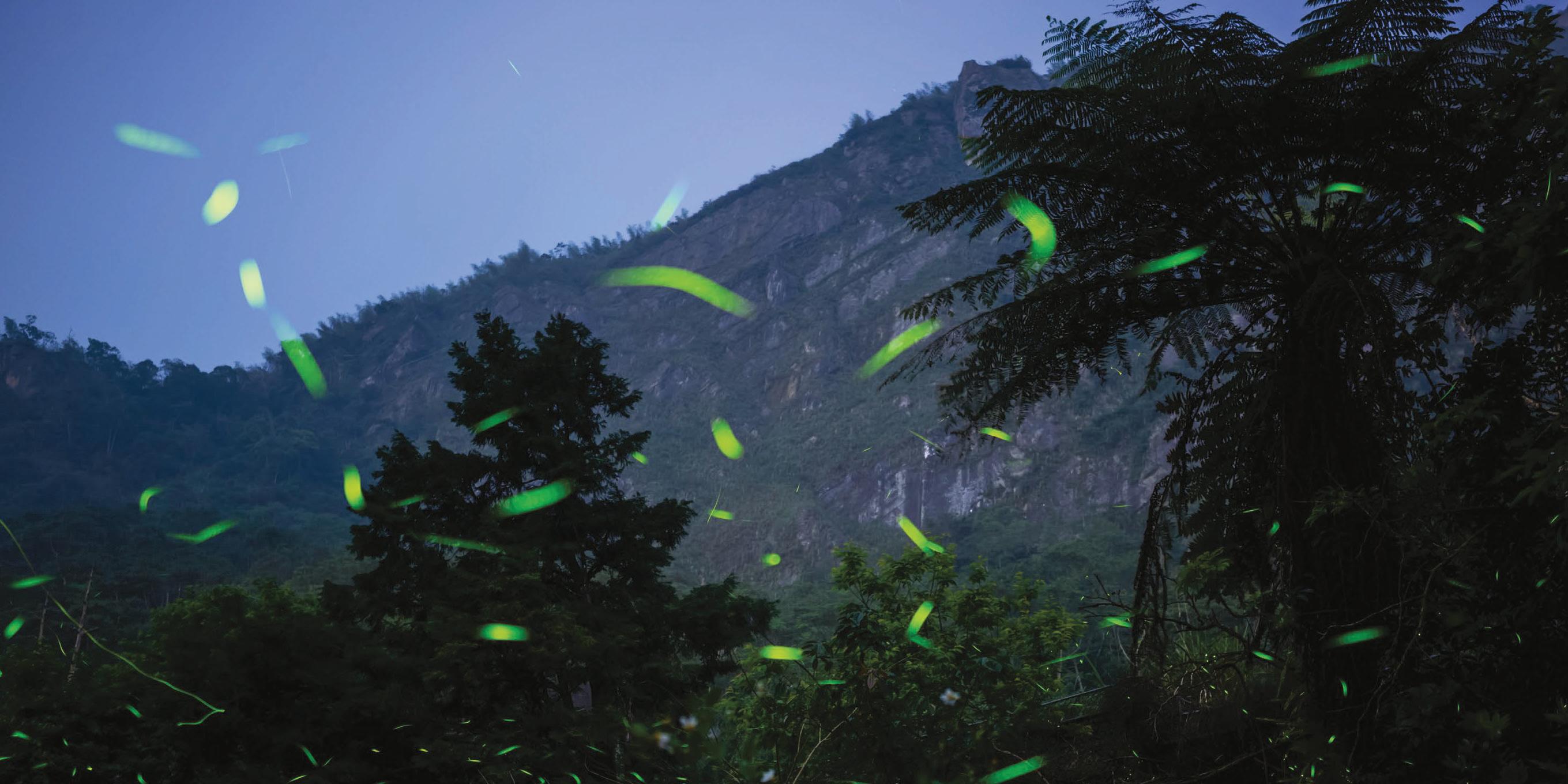कोशिश गोल्ड - मुक्त
Spiders keep fireflies as glowing prisoners that draw more prey to their webs
How It Works UK
|Issue 208
Nocturnal spiders have been filmed capturing fireflies and keeping them in their webs to attract more prey, even intermittently checking on them over the course of an hour.

When fireflies were kept on the webs, sheet-web spiders attracted significantly more prey than without the bioluminescent beetles, leading researchers to think that the spiders are purposefully using the fireflies as bait to increase hunting success. “Our findings highlight a previously undocumented interaction where firefly signals, intended for sexual communication, are also beneficial to spiders,” said I-Min Tso, a researcher at Tunghai University who studies spider behaviour. “This study sheds new light on the ways that nocturnal sit-and-wait predators can rise to the challenges of attracting prey and provides a unique perspective on the complexity of predator-prey interactions,” Tso added.
यह कहानी How It Works UK के Issue 208 संस्करण से ली गई है।
हजारों चुनिंदा प्रीमियम कहानियों और 10,000 से अधिक पत्रिकाओं और समाचार पत्रों तक पहुंचने के लिए मैगज़्टर गोल्ड की सदस्यता लें।
क्या आप पहले से ही ग्राहक हैं? साइन इन करें
How It Works UK से और कहानियाँ

How It Works UK
UNCANNY'S DANNY ROBINS
The creator and host of the BBC's Uncanny series tells us about his most chilling experiences while researching the show, and writing a ghost book for children
4 mins
Issue 208

How It Works UK
HOW FEATHERS GROW
A bird's proteinaceous plumage comes from the same source as our hair
1 mins
Issue 208

How It Works UK
New EV battery technology could power 500-mile road trips on a 12-minute charge
Scientists have used a neat chemistry trick to tackle a major challenge facing future batteries.
2 mins
Issue 208

How It Works UK
HOW AIR PURIFIERS WORK
These filtration devices clean a room's air of particles that can make a person sick
1 min
Issue 208

How It Works UK
Chinese scientists hunt for alien radio signals in a 'potentially habitable' star system
TRAPPIST-1 is a red dwarf star located about 40 light years away that hosts seven Earth-sized rocky planets, with at least three orbiting in the habitable zone where liquid water could exist.
2 mins
Issue 208

How It Works UK
WHAT HAPPENS WHEN WE DIE?
Our bodies are vessels for life, but in death they undergo a cascade of chemical and biological changes
3 mins
Issue 208

How It Works UK
WHY ARE KEYBOARDS QWERTY?
There's a reason why this seemingly random arrangement of letters is widely used on keyboard layouts
1 min
Issue 208

How It Works UK
A 'quasi-moon' discovered in Earth orbit may have been hiding for decades
A new paper describes a possible 'quasi-moon' of Earth, an interloping asteroid that may have been following our planet around for decades, undetected.
1 mins
Issue 208

How It Works UK
WHAT'S AN ANTI-DRONE GUN?
How these devices intercept and disable unmanned aerial vehicles
1 mins
Issue 208

How It Works UK
Dozens of mysterious blobs discovered inside Mars may be 'failed planets'
Giant impact structures, including the potential remains of ancient ‘protoplanets’, may be lurking deep beneath the surface of Mars.
2 mins
Issue 208
Listen
Translate
Change font size
